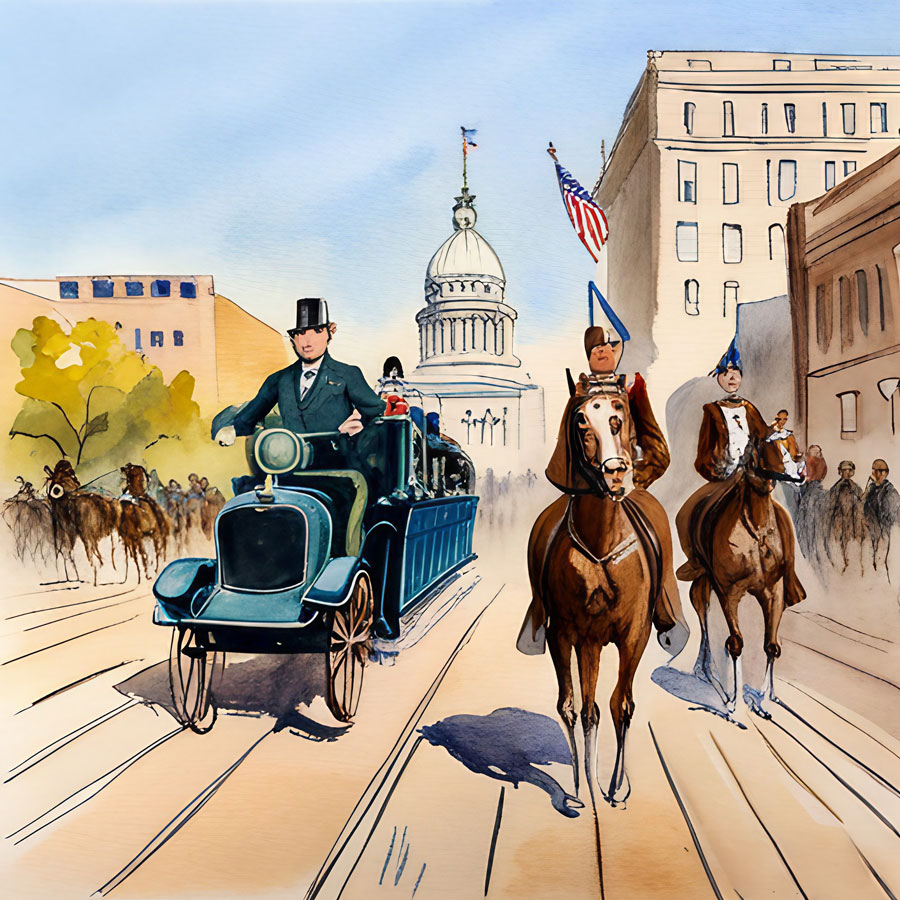A Journey Through Time and Culture
Introduction
Salt Lake City, the capital of Utah, is a city with a fascinating history that dates back to its founding in 1847. As we explore the annals of Salt Lake City’s local history, we will discover notable landmarks, delve into its founding by Mormon pioneers, and uncover important events that have shaped the city’s identity. Join us on this captivating journey through time and culture.

Founding and Pioneer Spirit
Salt Lake City was founded on July 24, 1847, by a group of Mormon pioneers led by Brigham Young. Seeking refuge from religious persecution, the pioneers arrived in the valley and established the city as a gathering place for members of the Church of Jesus Christ of Latter-day Saints (LDS). Their resilience and determination laid the foundation for what would become a thriving metropolis. (Source: Utah.com)

Temple Square
One of Salt Lake City’s most iconic landmarks is Temple Square. This 35-acre complex serves as the spiritual and cultural heart of the city, showcasing the Salt Lake Temple, the headquarters of the LDS Church. With its stunning architecture and meticulously manicured gardens, Temple Square attracts millions of visitors each year, offering a glimpse into the city’s deep-rooted religious heritage. (Source: Visit Salt Lake)

Transcontinental Railroad
In 1869, Salt Lake City played a pivotal role in the completion of the First Transcontinental Railroad at Promontory Summit, north of the city. This momentous event connected the east and west coasts of the United States, ushering in an era of unprecedented growth and development for Salt Lake City. The arrival of the railroad brought economic prosperity and cultural diversity to the region. (Source: Wikipedia)

Statehood and Capital
On January 4, 1896, Utah officially became a state, with Salt Lake City as its capital. This milestone marked the culmination of a long journey towards statehood and solidified Salt Lake City’s position as the political and administrative center of Utah. The city’s vibrant culture and thriving economy continued to flourish, attracting people from all walks of life. (Source: Salt Lake City Government)

Olympic Legacy
Salt Lake City’s history took on a global stage when it hosted the 2002 Winter Olympic Games. The event not only showcased the city’s world-class ski resorts and stunning landscapes but also left a lasting legacy of improved infrastructure, revitalization of downtown areas, and increased tourism. The Olympics put Salt Lake City on the map as a premier destination for winter sports enthusiasts. (Source: Utah History to Go)

Conclusion
Salt Lake City’s local history is a tapestry woven with stories of resilience, faith, and progress. From its humble beginnings as a refuge for pioneers to its status as a thriving capital city, Salt Lake City has grown into a vibrant hub of culture, commerce, and natural beauty. As we celebrate the landmarks, founding, and important events that have shaped Salt Lake City, we honor the diverse communities that have contributed to its rich heritage.





